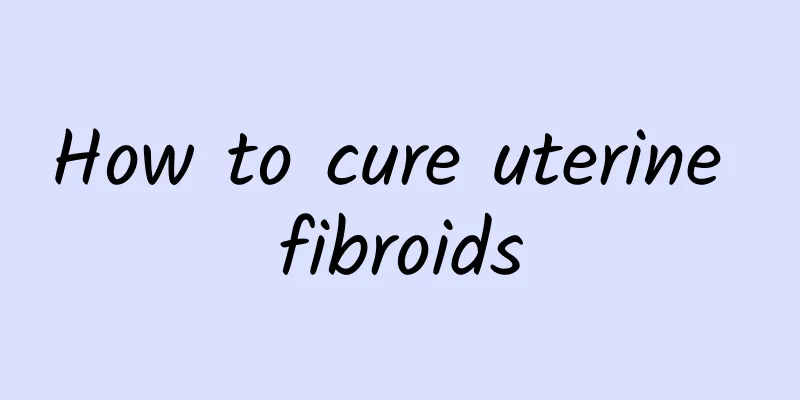How to treat moderate cervical erosion

|
Moderate cervical erosion can be improved through medication, physical therapy and surgery. The specific method should be selected according to the condition and doctor's advice. Medication includes antibiotics, anti-inflammatory drugs and hormone drugs. Physical therapy often uses laser, freezing and electrocautery. Surgery is suitable for those with more serious conditions. 1. Drug treatment is a common way to treat moderate cervical erosion. Antibiotics such as azithromycin and doxycycline can be used to control infection, anti-inflammatory drugs such as ibuprofen and diclofenac can help relieve inflammation, and hormone drugs such as estrogen ointment can promote the repair of cervical mucosa. Drug treatment should be carried out under the guidance of a doctor to avoid abuse of drugs and side effects. 2. Physical therapy is an effective means of treating moderate cervical erosion. Laser therapy removes diseased tissues through high-energy beams, cryotherapy destroys abnormal cells through low temperatures, and electrocautery burns the diseased area through electric current. Physical therapy is characterized by less trauma and faster recovery, but it must be performed in a professional medical institution, and postoperative care should be taken to prevent infection. 3. Surgical treatment is suitable for patients with severe or recurrent disease. Cervical conization removes diseased tissue for pathological examination, loop electrosurgical excision of the cervix uses an electric knife to remove abnormal areas, and cervical resection removes part or all of the cervix in extreme cases. Surgical treatment requires strict evaluation of indications and regular follow-up after surgery to monitor recovery. The treatment of moderate cervical erosion requires choosing the appropriate method according to individual conditions, while paying attention to daily care and regular check-ups. Maintaining personal hygiene, avoiding unclean sexual behavior, and enhancing immunity can help prevent the disease from getting worse. Following the timely adjustment plan during treatment can effectively improve symptoms and reduce the risk of recurrence. |
<<: What causes cervical hypertrophy?
>>: Will cervical polyps disappear on their own after menopause?
Recommend
What is an ectopic pregnancy? Abnormal pregnancy
Ectopic pregnancy is an abnormal pregnancy caused...
What are the causes of cervical erosion?
In today's society, many female friends suffe...
How to check menopause
What are the ways to check for menopause? Many fe...
Overeating causes gastrointestinal indigestion and constipation! Nutritionists teach you 7 tips to cleanse your intestines and reduce fat
When a few close friends get together, they love ...
Three principles of winter soup to avoid obesity
In the damp and cold winter, many people will mak...
What are the causes of irregular menstruation? Can I still have children if I have irregular menstruation?
What should I do if I have irregular menstruation...
Treatment of ovarian cysts with integrated Chinese and Western medicine
Ovarian cysts are common gynecological diseases i...
What is the quick way to relieve menstrual pain?
There is usually no quick way to relieve dysmenor...
What are the causes of irregular menstruation in women? How should women with irregular menstruation be treated?
Causes and treatment of irregular menstruation So...
Prevention of vulvar leukoplakia
Vulvar leukoplakia is a female genital disease th...
What are the methods for detecting endometrial tuberculosis?
There are many methods for checking endometrial t...
Fat people have many hidden worries! Study: Obesity may damage immunity
Obese people, please pay attention! In addition t...
What are the symptoms of adnexitis?
Most people don't know much about the symptom...
Why do uterine fibroids sometimes appear and sometimes disappear?
Why do uterine fibroids sometimes appear and some...
What is the cause of cervical hypertrophy and purulent discharge?
Cervical hypertrophy and purulent secretions may ...









